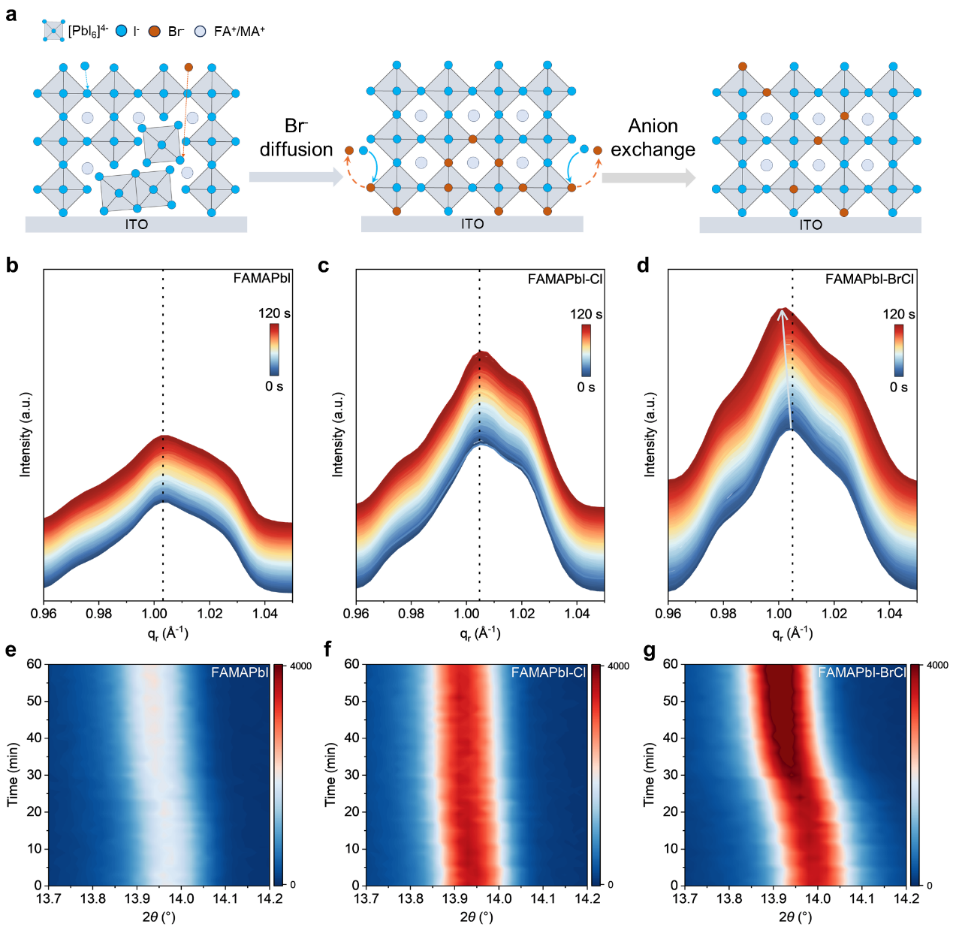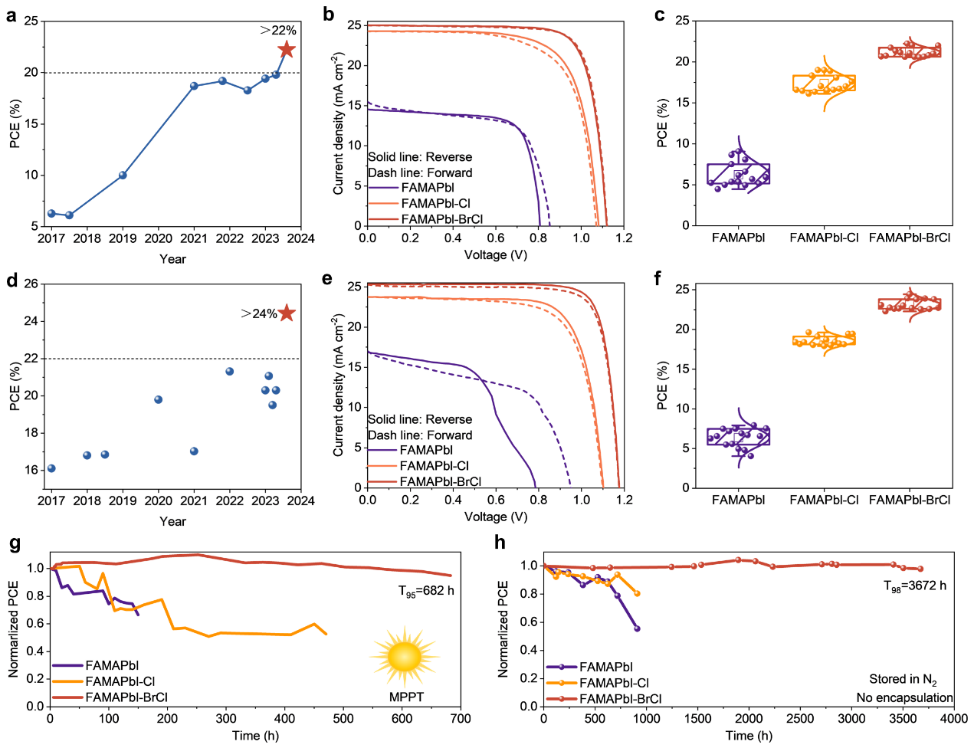The two-step sequential deposition method shows promise for controlling the crystallization and growth of compact perovskite by separating the deposition of lead(II) iodide (PbI2) and organic salt. Furthermore, thermal evaporated-PbI2 has the potential for textured surfaces and efficient perovskite-silicon tandem solar cells. However, the performance of inverted perovskite solar cells fabricated via the two-step sequential deposition still lags far behind the counterpart fabricated by the one-step deposition method from a precursor solution because of the uncontrollable reaction between PbI2 and organic salt. Therefore, it is still a grand challenge for organic amine salt to penetrate adequately on dense PbI2 layers for high-quality perovskite films without detrimental phase impurities.

Assistant Professor Longbin Qiu’s research team from the Department of Mechanical and Energy Engineering (MEE) at the Southern University of Science and Technology (SUSTech) has recently conducted a comprehensive study on inverted perovskite solar cells (PSCs).
Their related paper, entitled “Anion Exchange Promoting Non-Impurities Enables Conformable and Efficient Inverted Perovskite Solar Cells”, has been published in Energy & Environmental Science (EES).
In this study, the researchers fabricated high-quality perovskite films without detrimental phase impurities through an anion-exchange strategy in a sequential thermal evaporation-solution process. They found that substituting larger iodide ions with smaller bromide ions not only promoted the mass transport and penetration of organic compounds into the dense PbI2 layer but also facilitated in obtaining a high-quality perovskite film with high phase purity and homogeneous halide distribution (Figure 1).

Figure 1. Photovoltaic performance of PSCs based on perovskite via anion-exchange
A champion efficiency of 24.43% for inverted PSCs was achieved, which showed a certified performance of 24.18% in a designated test center, the National Photovoltaic Industry Metrology and Testing Center. Applying a fully scalable process with blade coating of the organic salt solution, a performance of 22.22% was attained. In addition, the resulting high-efficiency device maintained 95% of its initial PCE after 682 hours of operation and retained over 98% of its performance after 3672 hours of storage (Figure 2).

Figure 2. Photovoltaic performance of PSCs based on perovskite via anion-exchange
Their work provides a feasible avenue to obtain conformable large-area high-quality perovskite films, which has instructive significance for future development and practical application of large-area PSCs, flexible PSCs, and monolithic perovskite-silicon tandem cells. There is also potential to show a broad influence on other optoelectronic applications, including detectors and light-emitting diodes.
Postgraduate student Jun Fang from the Department of MEE at SUSTech and Dr. Dongxu Lin are the co-first authors of the paper. Assistant Professor Longbin Qiu is the sole corresponding author, and SUSTech is the first affiliated institution.
This work was supported by the National Natural Science Foundation of China (NSFC), Guangdong Basic and Applied Basic Research Foundation, Guangdong Grants, Shenzhen Science and Technology Program, High Level of Special Funds, and the Research Startup Grant by Shenzhen Municipal Government and SUSTech.
Paper link: https://doi.org/10.1039/D4EE02718C
To read all stories about SUSTech science, subscribe to the monthly SUSTech Newsletter.
Proofread ByAdrian Cremin, Yingying XIA
Photo ByDepartment of Mechanical and Energy Engineering